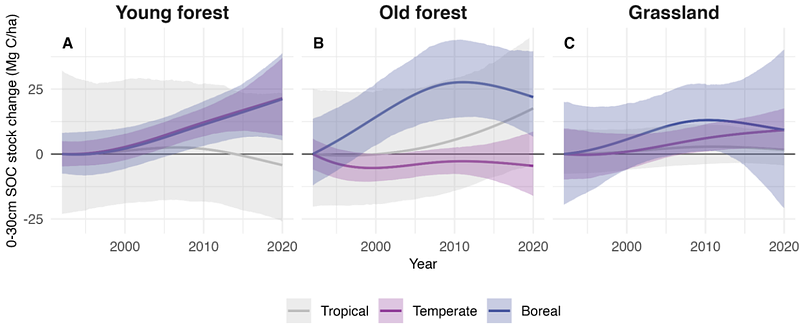A large global soil carbon sink informed by repeated soil samplings

A large global soil carbon sink informed by repeated soil samplings
Jia, R.; Fricke, E.; Malhotra, A.; Bar-On, Y. M.; Deng, J.; Pineiro, G.; Bazzoni, B.; Alvarez, R.; Findlay, N.; te Beest, M.; Zhou, Y.; Boutton, T. W.; Dar, J. A.; Kothandaraman, S.; MacDougall, A. S.; Eisenhauer, N.; Peri, P. L.; Zheng, J.; Power, S. A.; Reed, S. C.; Macek, P.; Haider, S.; Sitch, S.; O'Sullivan, M.; Friedlingstein, P.; Bond-Lamberty, B.; Hungate, B.; Jackson, R. B.; Subramanian, M.; Patel, K.; Terrer, C.
AbstractPartitioning the terrestrial carbon sink between vegetation and soil is crucial for predicting future climate change, but the role of soils remains poorly quantified. Here, we compiled 3,099 soil organic carbon time series spanning five decades. We found a global soil organic carbon sink of 1.83 plus or minus 0.9 (mean plus or minus SE) petagrams per year from 1992 to 2020, driven by extratropical young forests, boreal old forests, and grasslands, while trends in tropical ecosystems remain uncertain. Our findings suggest the net land sink resides almost exclusively belowground as soil carbon, emphasizing the global opportunity of soil conservation and restoration for climate mitigation.